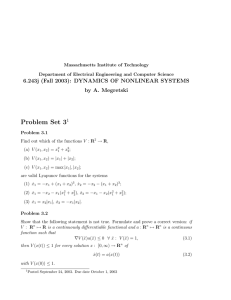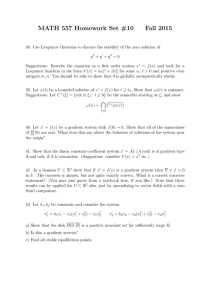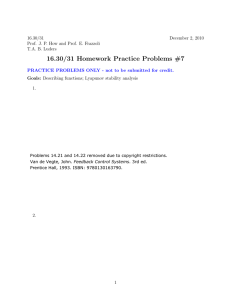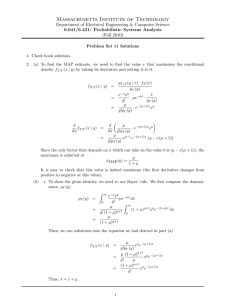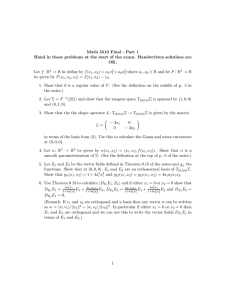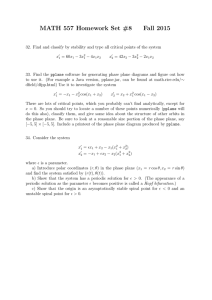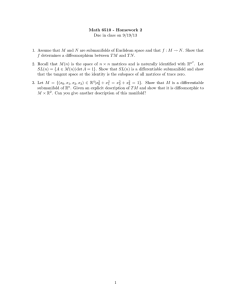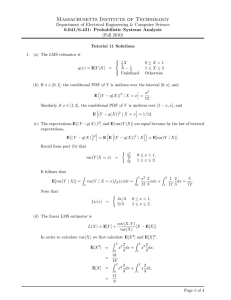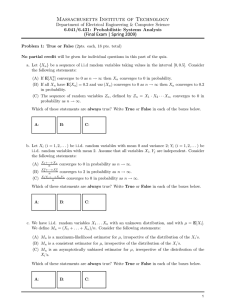Massachusetts Institute of Technology
advertisement
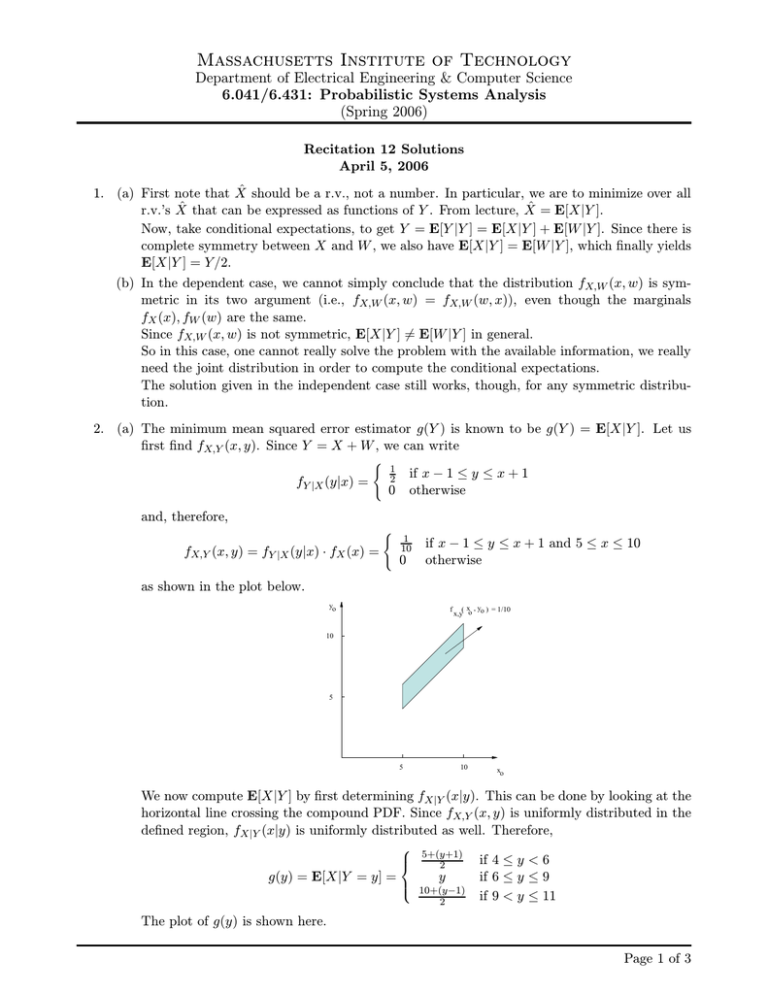
Massachusetts Institute of Technology Department of Electrical Engineering & Computer Science 6.041/6.431: Probabilistic Systems Analysis (Spring 2006) Recitation 12 Solutions April 5, 2006 1. (a) First note that X̂ should be a r.v., not a number. In particular, we are to minimize over all ˆ that can be expressed as functions of Y . From lecture, X ˆ = E[X|Y ]. r.v.’s X Now, take conditional expectations, to get Y = E[Y |Y ] = E[X|Y ] + E[W |Y ]. Since there is complete symmetry between X and W , we also have E[X|Y ] = E[W |Y ], which finally yields E[X|Y ] = Y /2. (b) In the dependent case, we cannot simply conclude that the distribution fX,W (x, w) is symmetric in its two argument (i.e., fX,W (x, w) = fX,W (w, x)), even though the marginals fX (x), fW (w) are the same. Since fX,W (x, w) is not symmetric, E[X|Y ] 6= E[W |Y ] in general. So in this case, one cannot really solve the problem with the available information, we really need the joint distribution in order to compute the conditional expectations. The solution given in the independent case still works, though, for any symmetric distribution. 2. (a) The minimum mean squared error estimator g(Y ) is known to be g(Y ) = E[X|Y ]. Let us first find fX,Y (x, y). Since Y = X + W , we can write fY |X (y|x) = ( 1 2 if x − 1 ≤ y ≤ x + 1 otherwise 0 and, therefore, fX,Y (x, y) = fY |X (y|x) · fX (x) = ( 1 10 0 if x − 1 ≤ y ≤ x + 1 and 5 ≤ x ≤ 10 otherwise as shown in the plot below. yo f ( x , y ) = 1/10 x,y o o 10 5 5 10 xo We now compute E[X|Y ] by first determining fX|Y (x|y). This can be done by looking at the horizontal line crossing the compound PDF. Since fX,Y (x, y) is uniformly distributed in the defined region, fX|Y (x|y) is uniformly distributed as well. Therefore, g(y) = E[X|Y = y] = The plot of g(y) is shown here. 5+(y+1) 2 y 10+(y−1) 2 if 4 ≤ y < 6 if 6 ≤ y ≤ 9 if 9 < y ≤ 11 Page 1 of 3 Massachusetts Institute of Technology Department of Electrical Engineering & Computer Science 6.041/6.431: Probabilistic Systems Analysis (Spring 2006) 11 10 9 g (yo ) 8 7 6 5 4 4 5 6 7 yo 8 9 10 11 (b) The linear least squares estimator has the form gL (Y ) = E[X] + cov(X, Y ) (Y − E[Y ]) σY2 where cov(X, Y ) = E[(X − E[X])(Y − E[Y ])]. We compute E[X] = 7.5, E[Y ] = E[X] + 2 = (10 − 5)2 /12 = 25/12, σ 2 = (1 − (−1))2 /12 = 4/12 and, using the fact E[W ] = 7.5, σX W 2 + σ 2 = 29/12. Furthermore, that X and W are independent, σY2 = σX W cov(X, Y ) = E[(X − E[X])(Y − E[Y ])] = E[(X − E[X])(X − E[X] + W − E[W ])] = E[(X − E[X])(X − E[X])] + E[(X − E[X])(W − E[W ])] 2 + E[(X − E[X])]E[(W − E[W ])] = σ 2 = 25/12. = σX X Note that we use the fact that (X − E[X]) and (W − E[W ]) are independent and E[(X − E[X])] = 0 = E[(W − E[W ])]. Therefore, gL (Y ) = 7.5 + 25 (Y − 7.5). 29 The linear estimator gL (Y ) is compared with g(Y ) in the following figure. Note that g(Y ) is piecewise linear in this problem. 11 10 g (yo ) , gL (yo ) 9 8 7 6 5 Linear predictor 4 4 5 6 7 yo 8 9 10 11 Page 2 of 3 Massachusetts Institute of Technology Department of Electrical Engineering & Computer Science 6.041/6.431: Probabilistic Systems Analysis (Spring 2006) 3. The problem asks us to find P (x21 + x22 ≤ α). The information given completely determines the joint density function, so we need only to perform the integration: P (x21 + x 22 ≤ α) = = ZZ 1 − x21 +x22 2 e dx1 dx2 2π Z e− 2 rdrdθ 0 x21 +x22 ≤α 2π Z α 1 0 2π r2 2 − α2 = 1−e Page 3 of 3

